| Home | Father | Mother | Children | Mount Carmel | Ancestry |
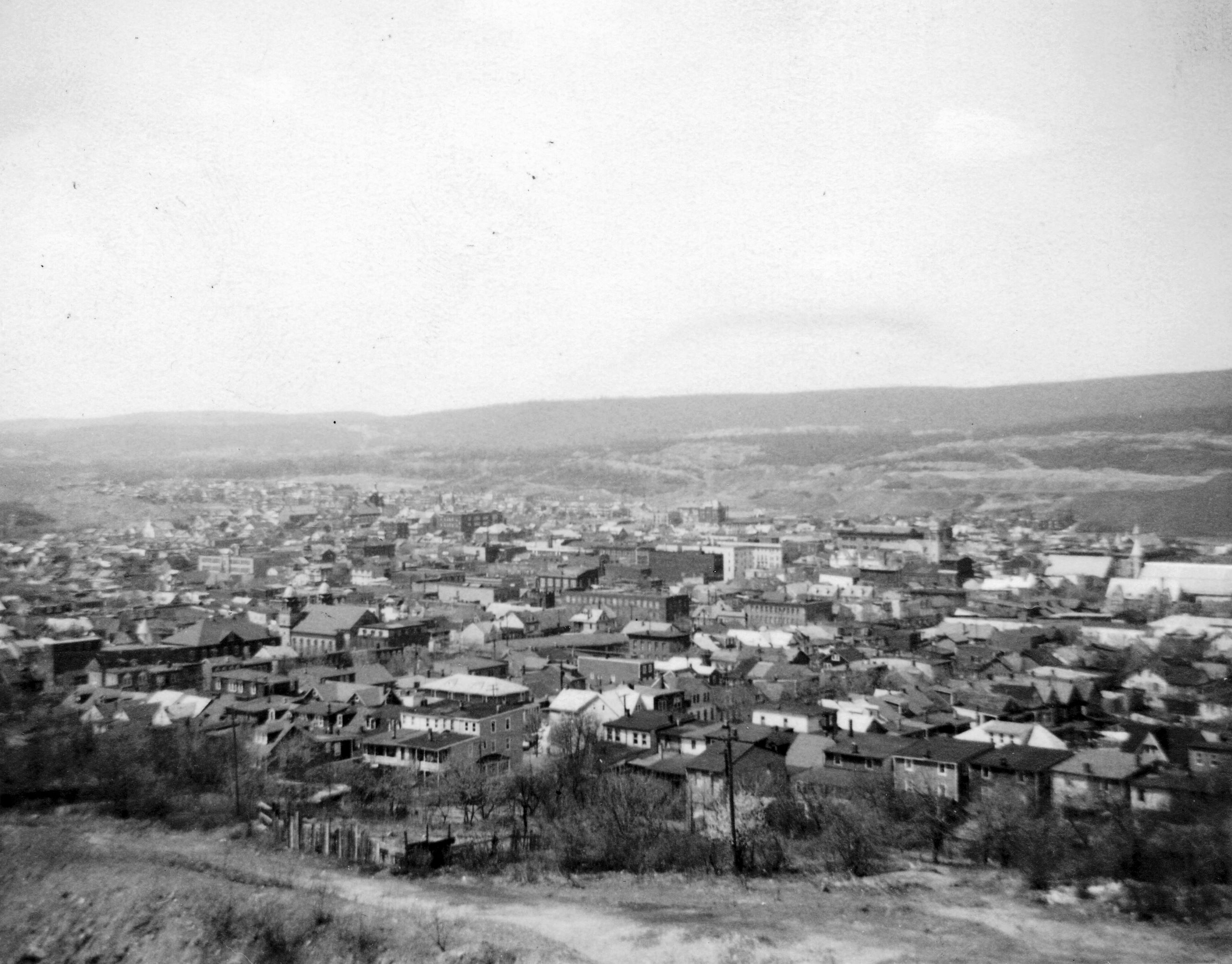
| Click here for other Mount Carmel links. |
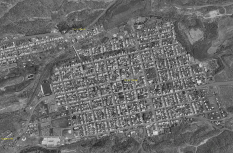
|
The photo of Mount Carmel above, looks to the Northwest and probably taken prior to 1950. |
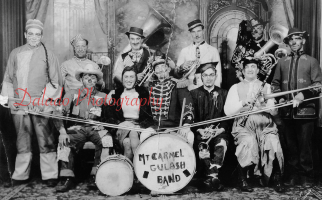
|
For a relatively small town There were few obstacles impeding their ability to provide their own entertainment |
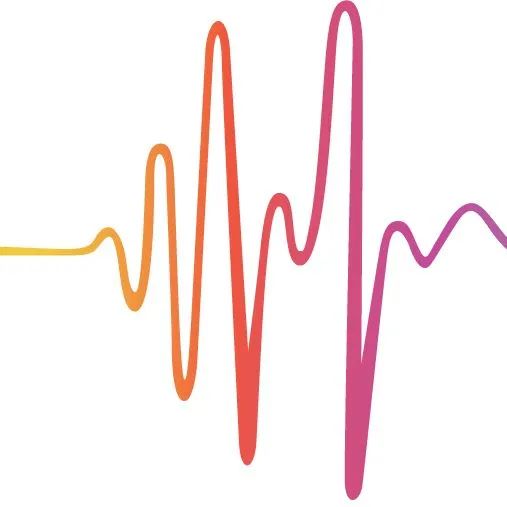
|
|
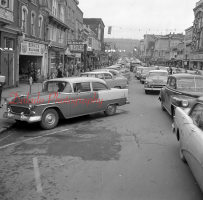
|
This is a view of Oak Street, the main shopping district, looking North from between 4th and 5th streets. Notice the filled parking spaces and the street jammed with traffic. Mount Carmel was once a vibrant, bustling community. |
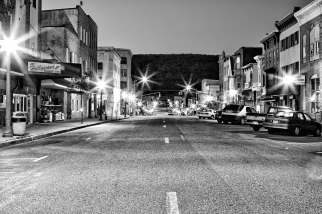
|
This view of Oak Street is typical of the inactivity that exists today. Mount Carmel depended largely on the coal industry to support its economy. When the Great DEpression hit the nation, the general reliance on coal as an energy source began its steep decline. Then after WWII all the garment factories an the cigar factory fled town for foriegn soils and cheaper labor costs. Consequently, it's population dwindled from an all time high of around 16,000 to about the roughly 6,000 that live there today. |
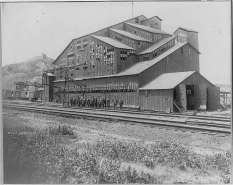
|
| Click here to see the 1955 Mount Carmel High School cheerleaders. |
| Click here to see the 1949-50 Mount Carmel High School Rifle Club. |
| The members of this club would handle rifles within the school building after school hours when the club met. If they brought their rifle to school they would keep them in their locker all day. The obvious question is what is wrong with current kids today such that we cannot allow them to take rifles to school....and how did they get that way? No alarm bells were sounded, nor were they neccassary, if a kid was seen walking down the street carrying a rifle. He was either on his way outside town to target shoot or to kill rats at a spot where folks dumped their household refuse. |
| Click here to see the Mount Carmel Churches. |
| Click here to see a 1914 Mt Carmel Business Directory. See the Saloon listed at 250 South Walnut Street under the name Hook. |

|
Stief's clothing store on the East side of Oak Street just above 3rd. As the end of Advent approached kids were sure to be hustled to Stief's to assure that they were properly attired for Easter. The store of choice for every day wear was J. C. Penny |
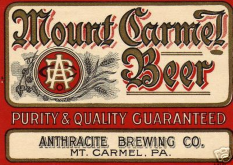
|
Beer was brewed throughout the region until about the 1950's when the big breweries, mainly in the mid West, began advertising extensively on TV. They walloped many smaller operations throughout the country. Only Pottsville can claim that they have a survivor. Mount Carmel had an over abundance of pubs. There was a bar one block North of the Hook home and another one block to the West... and yet another one block beyond that. Oak Street teemed with social clubs and restaurants serving alcohol in many variations. But the zaniest was Homiak's just across the tracks in Diamondtown at the North end of town. Click here to see Homiak's bar. Homiak's had a hidden microphone in the ladies room tied to a speaker in the bar. The bartender manned a switch to turn it on. Those bars played a vital role in easing the negative impact of the Great Depression and World War II
|
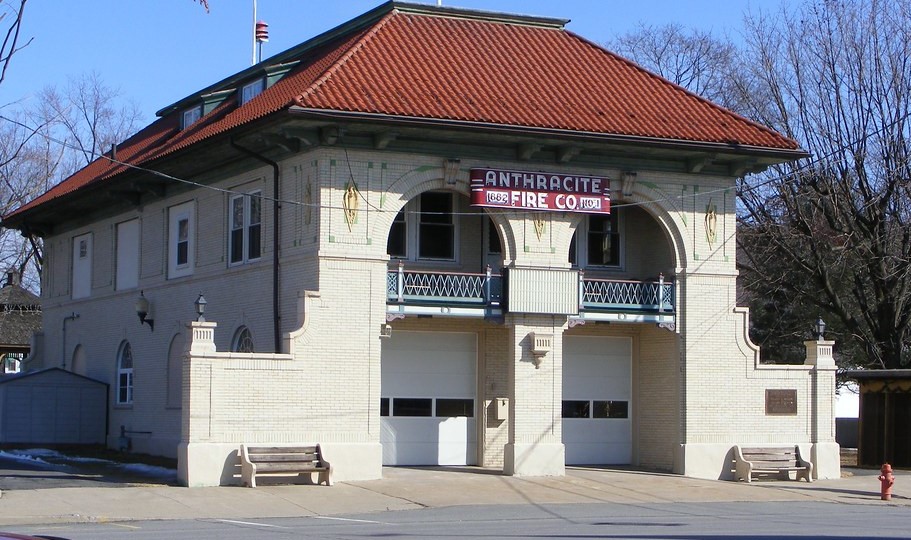
|
|
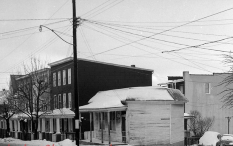
|
Gambling was illegal in the state. Yet, if desired, one could easily find a seat at a poker table at a site such as this little shack at the corner of Seventh and South Turnpike Streets. Bookmakers freely knocked on neigherhood doors as a convenience for those regular bettors, and those who were not regarded as racketeers but... were. There was a lottery run out of a building on 4th street just East of Oak Street. The first prize on Saturday was a thousand dollars which helped draw people to that downtown area from in and out of town. As a result Catholic church confessionals were exceptionally over burdened with handing out hefty penances. |
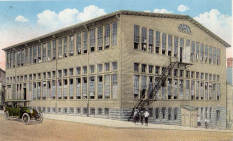
|
There were garment factories in the Northeast and Southest ends of town. Pictured is the factory at 6th and Walnut Streets. Ramona Hook worked here in the office before moving on to another factory. All these factories produced quality stuff. Such factories owe their existance to owners in places like New York city moving their operations to mainly Northeast Pennsylvania to take advantage of cheaper labor costs. Ironically almost all closed after the 1950's to seek lower operational costs in foreign countres. In was devestating after the garment workers union had secured good wages and working conditions for its members |
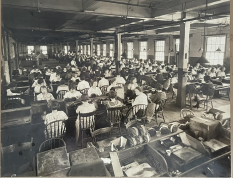
|
Women working in the General Cigar factory. This half block long four story building was located at the corner of 5th and Hickory Streets. It began operations in the early 1900's and provided employment for, mainly women in the area, for 55 years. It's amazing how many woman claimed they worked here, either briefly or for an extended number of years. Many started as 12 year olds. As with many other factories in the area, General Cigar moved its production processes off shore. |

|
It's hard to believe that at one time Mount Carmel had two railway stations. This one at the corner of 5th and Market Streets and the other almost beneath the viaduct that connects Mount Carmel to Atlas. The tracks continued through the 5th/Market intersection, behind the wholesale produce building, then across Chestnut Street stopping at Walnut Street adjacent to the Stevens Grade School. Just prior to the station, along side the tracks was a long structure where box cars unloaded their cargo. on the opposite side trucks were loaded for delivery throughout thr area. Between 6th and 7th Streets the tracks ran past a large warehouse where the high rise elderly apartments now stands. |
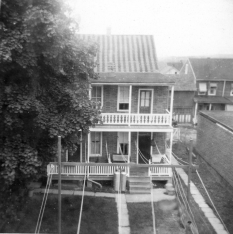
|
This photo was taken from an upstairs window of the Hook home looking West at the duplex owwned by the Hooks. The homes fronted on Peach alley and were home to various families over many decades, usually for less than 30 dollars a month. The homes had no bathrooms or hot water. They were heated by a coal fired heaterola located in the center downstairs room. An unclosed doorless toilet was located in the basement that had a dirt floor. Bathing was done in a large copper plated tub placed on the kitchen floor with water heated on a kitchen coal stove or a two burner propane stove. These homes were demolished many years ago. |
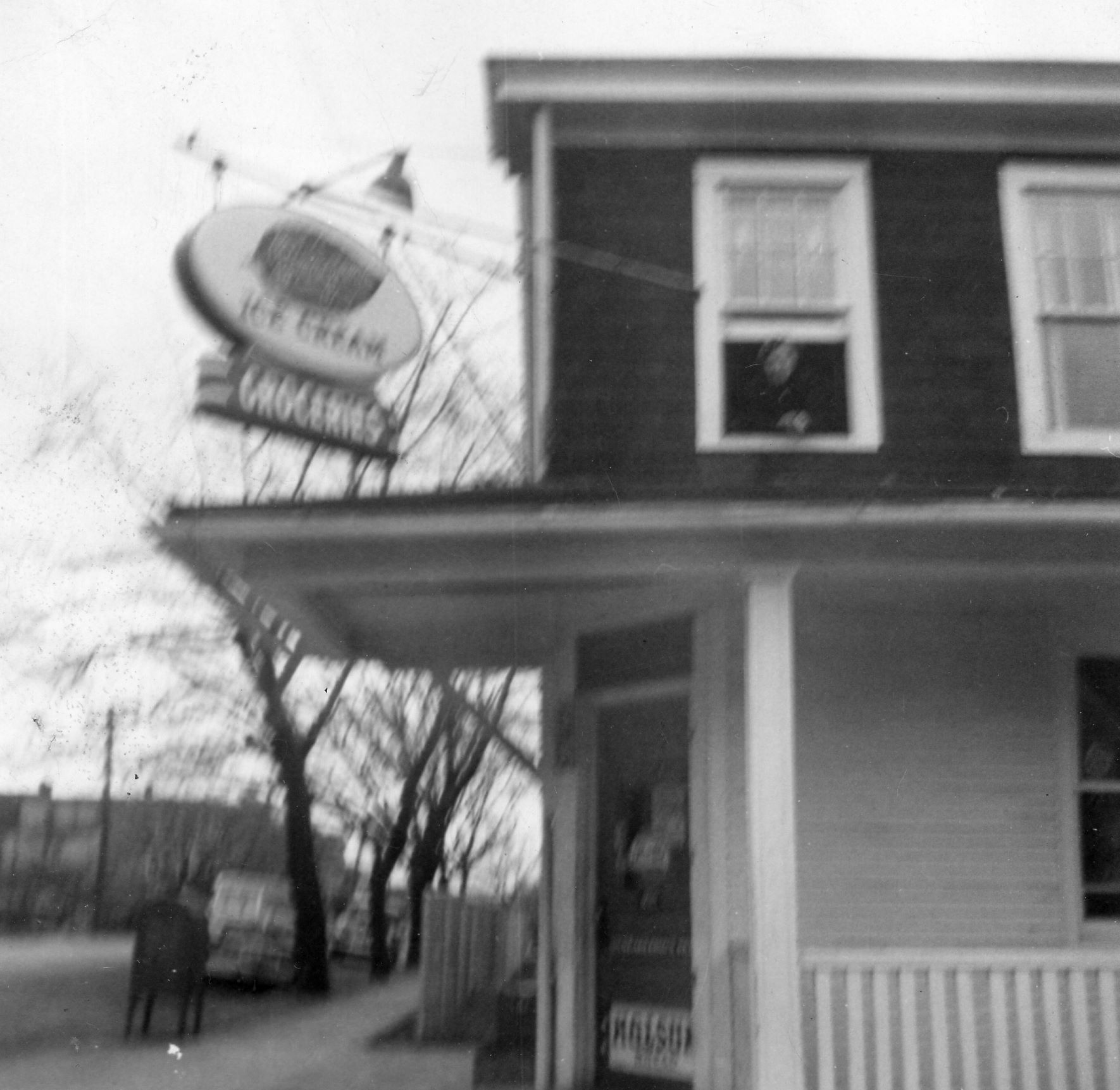
|
|
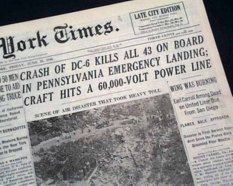
|
As a foolish teenager, I went to this crash site about four hours after it happened. It was headline news across the country. |
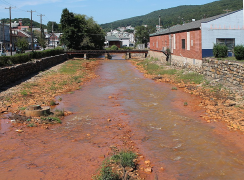
|
The Shamokin Creek flowed from Centralia to Mount bCarmel near coal strip mines but along the way there were many places that were pleasantly wooded. The creek was narrow and the water level usually only several inches deep. The water ran clear with small aquatic life. For kids it provided some delightful spots to hang out or just mess around. |

|